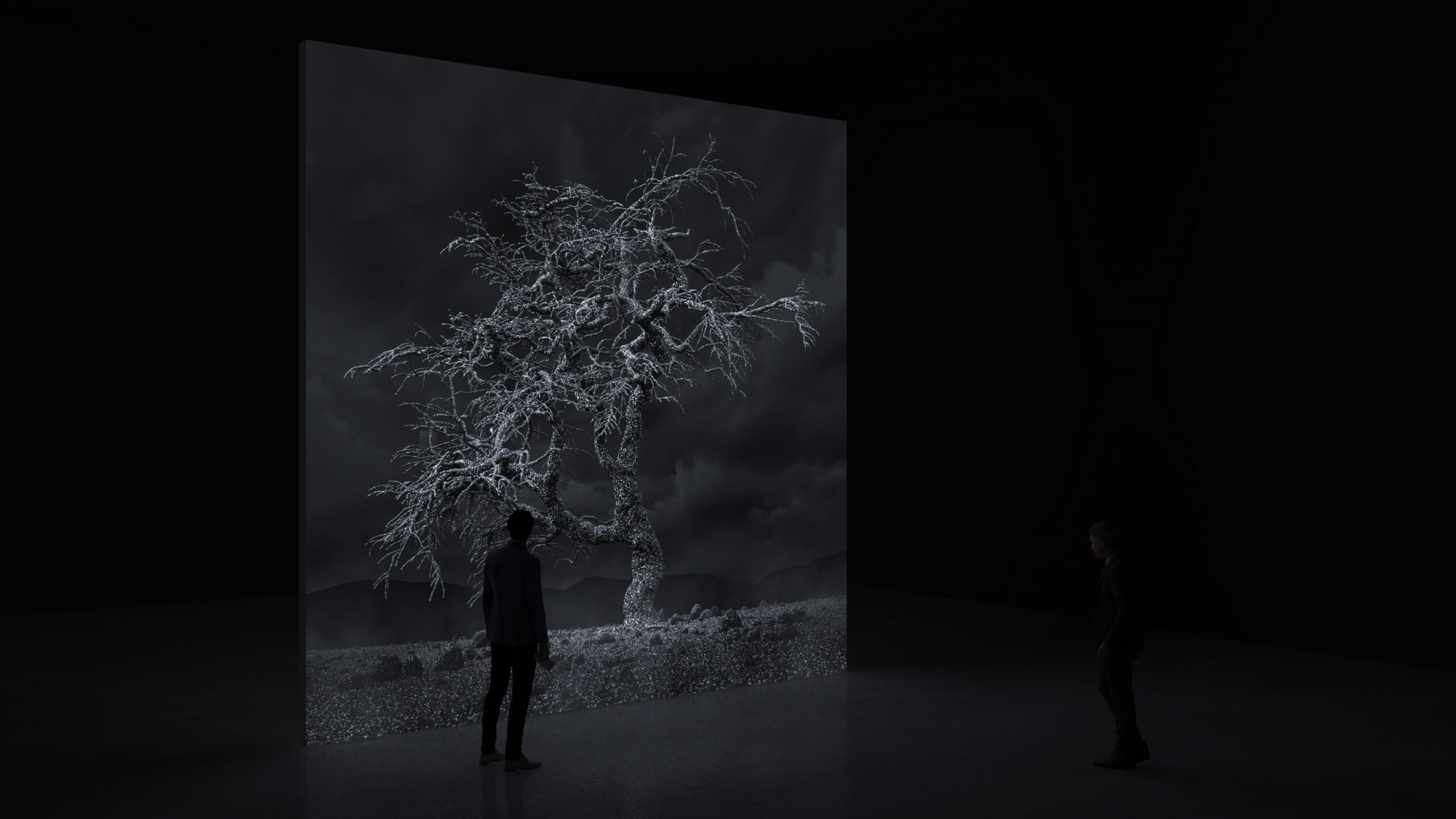
PILLARS OF DAWN (I)
2019 | 4K video installation with audio, 20′ x 20′ (dimensions variable)
* full series in production
MONOGRAPH
Kelly Richardson: Pillars of Dawn
Published by Kerber, Germany
Texts by Dr Sarah Cook, Madeleine Kennedy, Alistair Robinson, Dr Emily Stamey, Dr Carmen Victor
“‘Sculpting’ every branch of each tree and populating the entire landscape with millions of individualised crystals has been a painstaking labour of love. Roughly speaking, there is one crystal in each of the landscapes for every species still alive today. We live in a time when many scientists believe humans are causing the mass extinction of thousands upon thousands of other species; Richardson’s work asks us what it is in the world that has value for humans. In each of the scenarios we encounter, we see a beautiful, empty, crystallised world. It is almost as though all life-forms had been transformed into pure carbon – that is, into the most concentrated forms of pure carbon in the natural world – diamonds. The majesty and infinite wealth of the Earth is revealed, although no humans appear present to appreciate it.” Alistair Robinson, Director of Northern Gallery for Contemporary Art
Supported by Canada Council for the Arts
